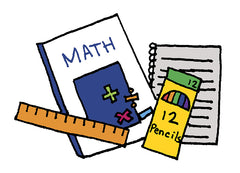Some years ago, when we had only three children and traveling was more thinkable, we attended a number of home education workshops and conventions. It was at one of these conventions that a fellow vendor, but not fellow home educator, made the following comment: “Homeschoolers are a fickle bunch. They buy what is new, and are suckers for any fad that comes along.” He shared this in a lip- smacking sort of way, his eye on the dollars to be made. We, on the other hand, as home educators, were not very happy about his assessment and began pondering a defense. But the more we considered the accusation, the more we had to agree with him. As the years passed and more and more vendors entered the home school arena, the original allegation was substantiated many times over. How many educational “pet rocks” do we have to be suckered into before we ask, “How should I pick a curriculum that genuinely meets the needs of my family?” How about a few thoughts from an inside source?
Set goals.
Before evaluating curriculum, be sure you know what your goals are. Do not list third grade math as a goal. Instead list thorough knowledge of multiplication tables, and a rudimentary grasp of fractions. Be as detailed as possible. Then compare your goals with the proposed curriculum. While some of you will need to be accountable to your state for some objectives, be sure you do not become enslaved to the whims of friends, family, and other peer groups.
Determine learning styles.
Your hands-on learner will struggle with flash cards, but your visual learner will thrive with them. Everyone can learn in a variety of ways, but when under stress, everyone functions best within their own modality. Whenever we are learning something new, we are under stress. Knowing how your child learns best will enable you to choose a program that will present both of you with the least amount of anxiety, and will allow him the greatest amount of growth. Investigate programs with your children’s learning styles in mind.
Stay with what works.
Educational supply journals are full of marketing gimmicks and educational equipment companies are repackaging duds, all with the goals of selling to the inexperienced and easily intimidated home teacher. What works in a classroom can be totally unsuitable for a home school setting. Most school programs must use a lot of busy work so that the teacher has time to attend to paperwork or the other 30 students. Time is too valuable for both you and your child to be spent doing this type of grunt work. Likewise, just because a product is new, does not make it better. Even if a reviewer, including myself, finds a product outstanding, that does not mean that your child will benefit from its use. Is your child making the kind of progress you are comfortable with? Does the approach take into account your child’s learning style? Is the subject matter challenging but not tear-provoking? Does it fit within your budget? Does it meet your family’s standard for content? If you answered yes to the majority of these questions seriously ask yourself, “Why am I thinking of changing? What needs will be met by the new curriculum which my current program cannot meet?”
Our goal isn’t that you buy our curriculum.
At Timberdoodle we sell only what we deem the finest. But what is best for our family may be totally unsuitable for yours. We invite you to look beyond the glitter and glimmer, beyond the reviews and recommendations, and consider goals, learning styles, and needs. It has been said that advertising and catalogs exist solely to promote a spirit of discontent. If that is the case, then Timberdoodle embraces an unconventional aim. We want you to be successful at teaching your children, with or without our products.
 Skip to content
Skip to content





